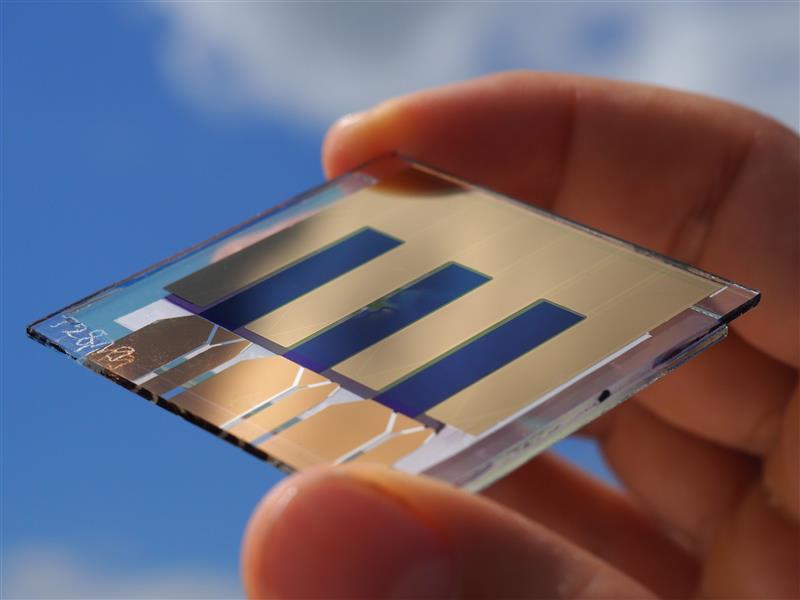News #23
World Record Efficiency of 15.8 % Achieved for 1 cm² Organic Solar Cell
Organic photovoltaics (OPV) opens up new areas of application for solar energy thanks to its climate friendly and inexpensive production and its flexible and potentially transparent solar cells. To help this technology achieve a market breakthrough, research institutes worldwide are working to improve the efficiency and scalability of organic solar cells. Researchers at the Fraunhofer Institute for Solar Energy Systems ISE and the Materials Research Center FMF at the University of Freiburg have now improved their own efficiency record, announced back in September 2020, for an organic solar cell with an area of one square centimeter. Now, with a new record efficiency of 15.8 percent, the research team at Fraunhofer ISE has again set the world record in this category.

Dr. Uli Würfel, department head at Fraunhofer ISE and group head at the Materials Research Center FMF, University of Freiburg, leads the research on organic solar cells: "We achieved the improvement in the record-breaking solar cell primarily by applying an anti-reflection coating, which allows more light to be absorbed in the photoactive layer of the cell, thus generating a higher current."
The thin-film system, which was deposited using a sputtering process, was developed in house by researchers from a related department at Fraunhofer ISE. "Cross-thematic work is the great strength of the institute," says Prof. Dr. Andreas Bett, Institute Director at Fraunhofer ISE. "Parallel in-house research on different photovoltaic technologies and their respective manufacturing processes inspires collaboration and synergy effects."
Fraunhofer ISE uses this coating technology not only for reducing reflection but also for developing electrodes for semi-transparent organic solar cells. These solar cells consist of a photoactive organic layer applied to a back electrode that allows the visible light to pass through as much as possible while strongly reflecting the near-infrared light back into the solar cell where it is absorbed and converted into electricity. Within the research project "Durchblick-PV - Entwicklung von organischen Solarmodulen mit hoher visueller Transparenz" (See-Through PV: Development of organic solar modules with high visual transparency), funded by the German Federal Ministry of Economic Affairs and Climate Protection (BMWK), the scientists are investigating potential materials for the absorber layer and the front and rear electrodes which are highly transparent to visible light.
Organic solar cells have many advantages. They can be manufactured without using heavy metals and other critical elements, are lightweight, mechanically flexible, easy to integrate, and are homogeneous in appearance even when semi-transparent. By selecting organic semiconductors that absorb only infrared light, transparent solar cells can be developed for applications such as windows and transparent protective covers for crops. In this way, products that provide weather and overheating protection can be combined with useful power generation. Before such products reach market readiness, however, some important development steps still need to be taken.
Last modified: